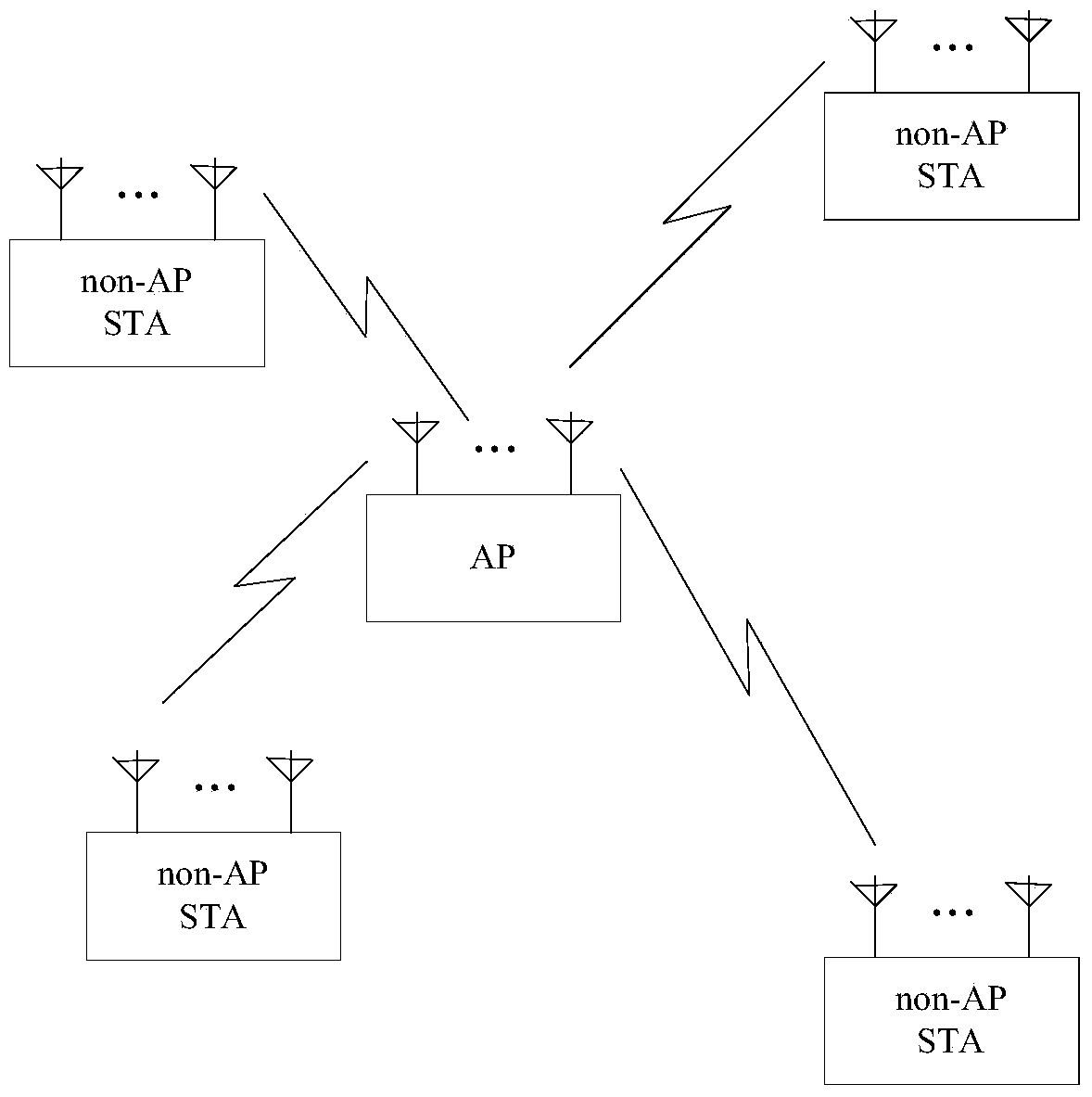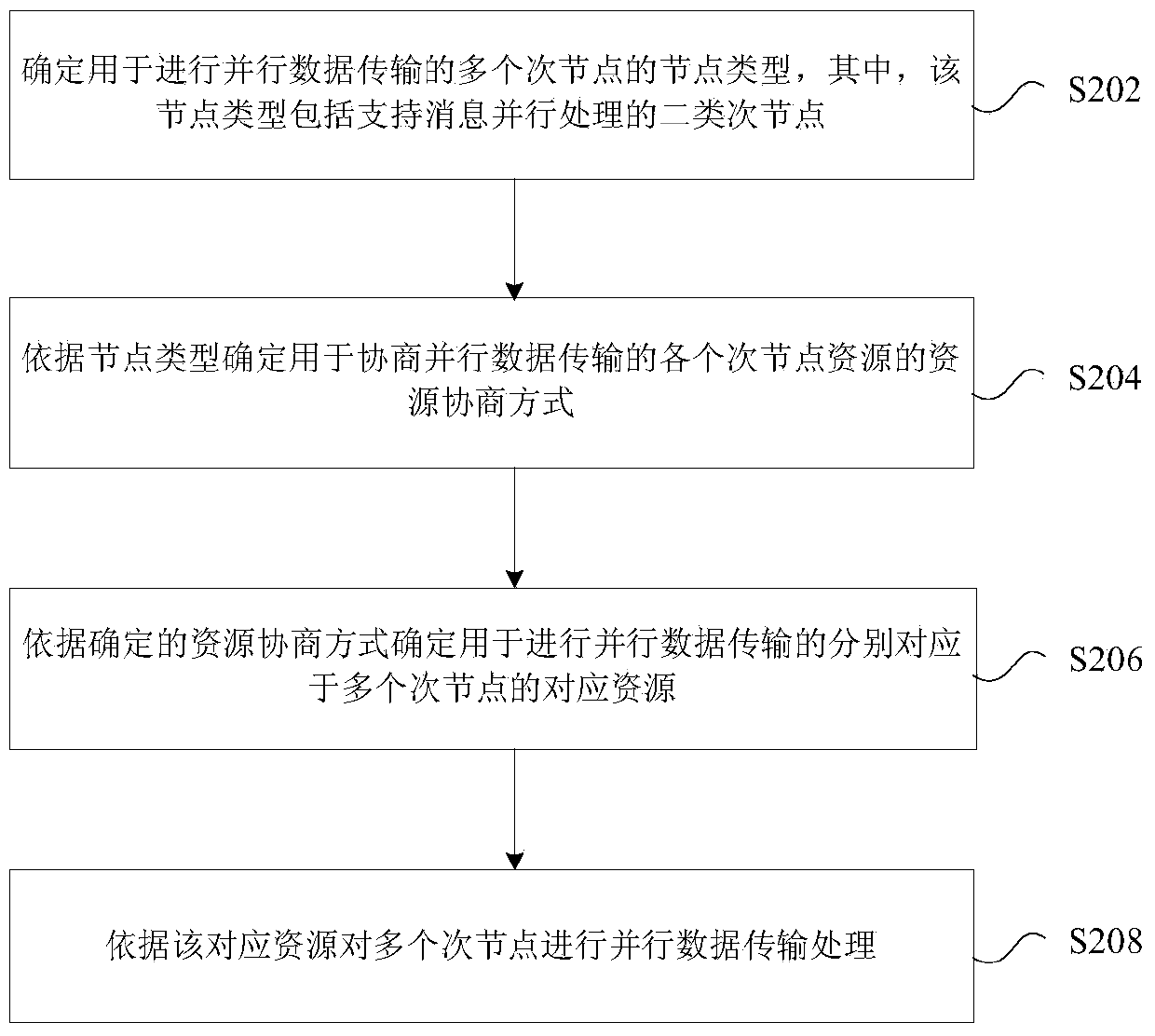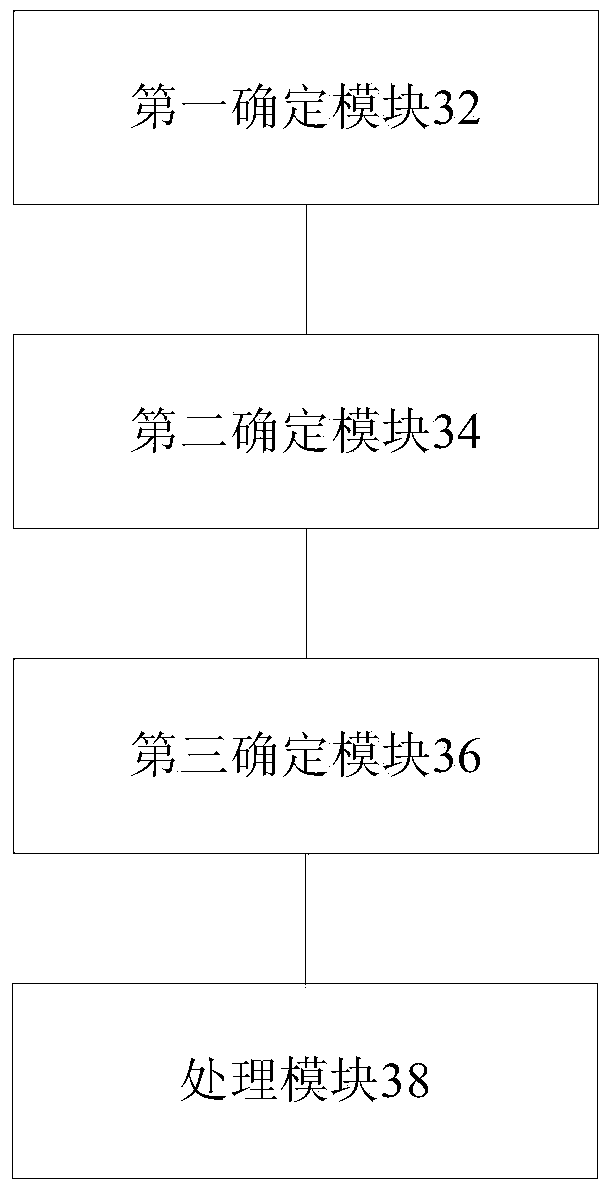Parallel data transmission processing method and device
A data transmission and parallel processing technology, applied in the field of communication, can solve the problems of WLAN network unable to transmit data in parallel, WLAN unable to establish effective parallel transmission links, etc., to avoid interference and improve network efficiency.
- Summary
- Abstract
- Description
- Claims
- Application Information
AI Technical Summary
Problems solved by technology
Method used
Image
Examples
Embodiment 1
[0088] This implementation is used to illustrate several situations where the frequency range indication information indicates content. Assuming that the operating bandwidth of the network is 160MHz, every 20MHz is a sub-channel, and the sub-channel numbers are recorded as 0, 1, 2, 3, 4, 5, 6, and 7 respectively. The main channel of the BSS is the No. 2 sub-channel. Figure 10 is a schematic diagram of channel division according to a preferred embodiment of the present invention, such as Figure 10 As shown, the channel plan also defines four 40MHz channels and two 80MHz channels, for example, 0 and 1 can form a 40MHz channel, but 1 and 2 cannot form a 40MHz channel.
[0089] The frequency range indication information may be frequency band starting position (or channel starting position) and bandwidth information. For example, the number of bits indicated by the channel start position is 3 bits, and the number of bits indicated by the channel bandwidth is 2 bits. When the va...
Embodiment 2
[0094] An AP and multiple non-AP STAs form a BSS. Among them, the operating bandwidth of BSS is 40MHz, including 20MHz main channel and 20MHz auxiliary channel, but among them, STA1 is a legacy STA that only supports 11a standard, and the maximum supported bandwidth is 20MHz, and STA2 is HEW site, which supports OFDMA transmission and 40MHz bandwidth. The default detection channel of all stations contains at least the main channel.
[0095] Figure 11 is a schematic diagram of setting up parallel transmission according to the second preferred embodiment of the present invention, such as Figure 11 As shown, the AP wants to use OFDMA technology to transmit data to STA1 and STA2 in parallel, then the AP competes to obtain the transmission opportunity TXOP (transmission opportunity), and initiates the parallel transmission establishment process:
[0096] The AP sends an RTS frame to STA1, and STA1 replies with a CTS frame after receiving it; the AP then sends another RTS frame ...
Embodiment 3
[0100] An AP and multiple non-AP STAs form a BSS. Among them, the operating bandwidth of the BSS is 80MHz, including a 20MHz main channel (assumed to be sub-channel 0) and three 20MHz auxiliary channels (sub-channels 1, 2, and 3), but STA1 is a legacy STA that supports the 11n standard and supports The maximum bandwidth of STA2 is 40MHz, and STA2 is an HEW site, supporting OFDMA transmission and 80MHz bandwidth. The default detection channel of all stations contains at least the main channel.
[0101] Figure 12 is a schematic diagram of establishing parallel transmission according to the third preferred embodiment of the present invention, as shown in Figure 12 As shown, the AP wants to use OFDMA technology to transmit data to STA1 and STA2 in parallel, then the AP competes to obtain the transmission opportunity TXOP (transmission opportunity), and initiates the parallel transmission establishment process:
[0102] The AP sends an RTS frame to STA1, and STA1 replies with ...
PUM
 Login to View More
Login to View More Abstract
Description
Claims
Application Information
 Login to View More
Login to View More - R&D
- Intellectual Property
- Life Sciences
- Materials
- Tech Scout
- Unparalleled Data Quality
- Higher Quality Content
- 60% Fewer Hallucinations
Browse by: Latest US Patents, China's latest patents, Technical Efficacy Thesaurus, Application Domain, Technology Topic, Popular Technical Reports.
© 2025 PatSnap. All rights reserved.Legal|Privacy policy|Modern Slavery Act Transparency Statement|Sitemap|About US| Contact US: help@patsnap.com



